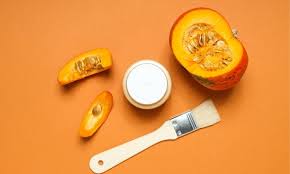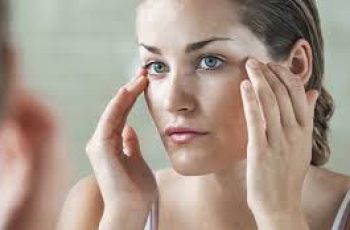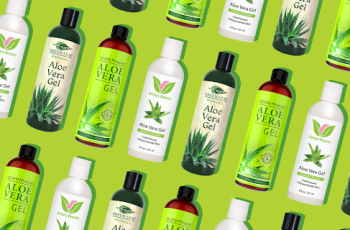
The Multifaceted Beauty Benefits of Pumpkin: A Comprehensive Guide to Skin and Hair Care
Pumpkin is often seen as a quintessential symbol of autumn, decorating porches during Halloween and starring in beloved seasonal treats like pumpkin pie and lattes. However, beyond its festive appeal, pumpkin is a nutritional powerhouse with impressive health and beauty benefits. While it’s well known as a superfood for internal wellness, many people overlook its potential to transform your skin and hair. Packed with a rich array of vitamins, antioxidants, minerals, and natural enzymes, pumpkin can play a transformative role in your beauty routine—delivering hydration, glow, strength, and balance.
In this comprehensive guide, we’ll explore how pumpkin benefits both skin and hair, delve into its nutrient profile, and provide simple, effective DIY recipes to incorporate into your beauty regimen.
Nutritional Profile of Pumpkin: What Makes It So Powerful?
The secret behind pumpkin’s effectiveness lies in its diverse and dense nutrient composition. Here’s a closer look at the key components that make pumpkin so beneficial for external use:
Vitamin A (Beta-Carotene): Perhaps pumpkin’s most well-known nutrient, beta-carotene is converted by the body into vitamin A, which plays a critical role in skin cell turnover and vision health. It also supports wound healing and may help improve skin tone.
Vitamin C: A potent antioxidant that supports collagen synthesis, vitamin C is key for repairing skin damage, reducing the appearance of scars, and enhancing overall skin brightness.
Vitamin E: This fat-soluble antioxidant protects skin from oxidative stress caused by environmental aggressors like pollution and UV rays. It also helps maintain the skin’s lipid barrier and locks in moisture.
B Vitamins (Folate, Niacin, Riboflavin, B6): These support overall skin health by improving blood circulation, enhancing skin metabolism, and aiding tissue repair.
Zinc: Crucial for controlling oil production, fighting acne-causing bacteria, and supporting skin’s natural healing process.
Magnesium: Helps regulate cortisol (the stress hormone) and supports hydration and elasticity in the skin.
Omega-3 and Omega-6 Fatty Acids: These essential fatty acids contribute to a healthy skin barrier, maintaining hydration, and reducing inflammation.
Antioxidants: In addition to vitamins A, C, and E, pumpkin contains phytonutrients and polyphenols that fight free radical damage and protect skin cells.
Together, these nutrients provide a comprehensive suite of skin-loving and hair-strengthening benefits that rival even the most expensive commercial products.
Skincare Benefits of Pumpkin
Let’s take a deeper dive into how pumpkin can revitalize your skin.
1. Natural and Gentle Exfoliation
Pumpkin pulp is rich in fruit enzymes and alpha-hydroxy acids (AHAs), which act as natural exfoliants. These compounds help remove the top layer of dead skin cells, revealing fresh, radiant skin underneath.
Unlike chemical peels or physical exfoliators that can irritate sensitive skin, pumpkin’s enzymes work gently, making it ideal for people prone to redness, dryness, or sensitivity. The exfoliation not only improves skin texture but also enhances the penetration and effectiveness of your other skincare products.
Regular exfoliation with pumpkin-based products can:
Clear clogged pores
Diminish blackheads and whiteheads
Minimize acne scars and blemishes
Improve overall skin tone and brightness
2. Deep Hydration and Moisture Retention
Dry skin can lead to flaking, tightness, and premature aging. The fatty acids, potassium, and natural oils in pumpkin help restore moisture levels without clogging pores. Potassium aids in maintaining the skin’s electrolyte balance, which supports optimal hydration and skin plumpness.
When used as a moisturizing agent, pumpkin can soothe dry patches, reduce flakiness, and restore suppleness to the skin. It’s particularly helpful during winter months or in arid climates where moisture loss is a constant issue.
3. Anti-Aging Properties
Pumpkin’s vitamin A (in the form of beta-carotene), vitamin C, and vitamin E are powerful antioxidants that protect against the damage caused by free radicals. Free radicals, produced by exposure to UV light and pollution, break down collagen and elastin, leading to wrinkles and sagging skin.
Pumpkin supports the synthesis of collagen and elastin, keeping the skin firm and resilient. It also speeds up cellular regeneration, which fades fine lines and renews dull skin. With consistent use, your skin will appear smoother, firmer, and more radiant.
4. Acne Prevention and Treatment
Pumpkin is a natural solution for acne-prone skin. It contains B vitamins like niacin and folate that improve circulation and encourage cell turnover, helping to keep pores clear and reduce inflammation. Additionally, the zinc content in pumpkin helps regulate sebum production—a key factor in acne development.
Zinc also possesses antimicrobial properties, which help fight acne-causing bacteria. Pumpkin masks or serums infused with zinc and B vitamins can calm inflamed breakouts, prevent new ones, and even reduce the risk of post-acne scarring.
5. Brightening and Evening Out Skin Tone
Hyperpigmentation, sun spots, and uneven skin tone are common concerns, especially as we age. The vitamin C in pumpkin helps inhibit melanin production, the pigment responsible for dark spots.
Regular use of pumpkin-infused skincare can:
Fade age spots
Reduce sun damage
Improve overall brightness
Promote a more even, glowing complexion
Haircare Benefits of Pumpkin
While pumpkin is often lauded for its skin benefits, its effects on hair health are equally impressive.
1. Stimulates Hair Growth
Zinc, potassium, and folate are essential nutrients for hair growth—and pumpkin is rich in all three. Zinc helps maintain healthy hair follicles and supports collagen production, which forms the structure of hair strands.
Folate improves blood flow to the scalp, ensuring hair follicles receive the oxygen and nutrients they need to grow. For individuals experiencing hair thinning or slow growth, pumpkin can act as a natural stimulant to revitalize the scalp.
2. Strengthens Hair and Reduces Breakage
Pumpkin’s combination of vitamins A, C, and E, along with omega fatty acids, helps strengthen hair from root to tip. These nutrients repair damage, prevent split ends, and reinforce the hair shaft to reduce breakage.
Vitamin A also regulates the production of sebum (scalp oil), keeping the scalp nourished and preventing dryness and irritation—two factors that can contribute to weak hair.
3. Adds Shine and Softness
Dry, dull hair can benefit greatly from the moisture-rich profile of pumpkin. Fatty acids and antioxidants hydrate the hair shaft and restore its natural luster. When used in masks or conditioners, pumpkin smooths the hair cuticle, reduces frizz, and adds a healthy, radiant shine.
DIY Pumpkin Beauty Recipes
You don’t need to rely on store-bought products to harness the power of pumpkin. Here are a few easy, effective DIY recipes using fresh or canned pumpkin puree.
DIY Pumpkin Face Mask for Dry or Dull Skin
Ingredients:
2 teaspoons of pureed cooked pumpkin
½ teaspoon of raw honey
¼ teaspoon of heavy cream or yogurt
Instructions:
In a small bowl, mash the cooked pumpkin until smooth.
Mix in the honey and cream.
Apply the mixture evenly to your face, avoiding the eye area.
Leave it on for 10–15 minutes.
Rinse with lukewarm water and pat dry.
Benefits: Exfoliates dead skin cells, hydrates deeply, and leaves skin plump and glowing.
DIY Pumpkin Hair Mask for Dry or Damaged Hair
Ingredients:
½ cup of pumpkin puree
1 tablespoon of coconut oil or argan oil
1 tablespoon of yogurt or apple cider vinegar
Instructions:
Mix all ingredients in a blender until smooth.
Apply to damp hair, focusing on the scalp and ends.
Cover with a shower cap and leave on for 20–30 minutes.
Rinse thoroughly and shampoo as usual.
Benefits: Strengthens hair, restores moisture, and boosts shine.
Conclusion: Why You Should Add Pumpkin to Your Beauty Routine
Pumpkin’s versatility and potency make it a standout ingredient in the world of natural beauty. Whether you’re dealing with dry skin, dullness, acne, or hair breakage, pumpkin provides a comprehensive solution backed by science and centuries of natural use. Its rich vitamin and mineral content, coupled with its gentle yet effective action, make it suitable for all skin types and hair textures.
By incorporating pumpkin-based treatments into your weekly self-care routine—whether through homemade masks or high-quality beauty products—you can nourish your body from the outside in and achieve radiant, healthy skin and hair, all year round.


